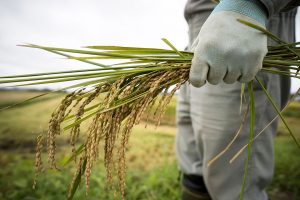THE DEFICIT in agricultural goods trade widened 40.3% year on year to $2.55 billion in the first quarter, according to preliminary data from the Philippine Statistics Authority.
The fourth quarter 2021 deficit was $2.36 billion.
Agricultural imports grew 33.4% year on year to $4.50 billion. Exports tallied $1.95 billion, up 25.3%.
Total trade in agricultural goods — the sum of exports and imports — grew 30.8% from a year earlier to $6.45 billion.
Cereals were the top first-quarter import at $3.93 billion, or 87.4% of the total.
Agricultural imports from the Association of Southeast Asian Nations (ASEAN) amounted to $1.52 billion or 17.5% of all goods imported. For the first quarter, Indonesia remained the top source of agricultural products with $401.91 million.
The top commodities imported from ASEAN were animal or vegetable fats and oils and their cleavage products; prepared edible fats; animal or vegetable waxes ($410.15 million), miscellaneous edible preparations ($362.64 million) and cereals ($329.07 million).
Meanwhile, the value of agricultural exports tallied $1.949 billion, accounting for 10% of all exports.
The top export was animal or vegetable fats and oils and their cleavage products; prepared edible fats; animal or vegetable waxes amounting to $623.32 million, or 32% of all exports.
Agricultural exports to ASEAN amounted to $261.69 million, or 7.5% of all exports to the region. Malaysia was the top destination, accounting for $111.84 million, or 42.7%.
The top commodities exported to ASEAN were animal or vegetable fats and oils and their cleavage products; prepared edible fats; animal or vegetable waxes ($91 million); tobacco and manufactured tobacco substitutes ($85.14 million), and dairy produce, birds’ eggs, natural honey, and edible products of animal origin, not elsewhere classified ($13.61 million).
The Netherlands was the top European export destination with $328.86 million or 62.3% of all European shipments, while Spain was the top source of such imports with $97.48 million, or 23.9% of the total.
In an e-mail interview, University of Asia and the Pacific Senior Economist Cid L. Terosa attributed the agricultural deficit to “rising agricultural commodity prices worldwide due to supply issues spawned by the Russia-Ukraine war, constricted global markets for agricultural exports, and the depreciating peso,” he said.
“The widening gap between agricultural exports and imports is indicative of the country’s struggle to sell agricultural products abroad and to buy agricultural commodities from other countries given the outbreak of the geopolitical tensions in Europe,” Mr. Terosa added.
Mr. Terosa expects the agricultural trade deficit to continue to expand.
“The next quarter won’t be different from the first quarter of this year. The agricultural trade deficit will continue to widen since supply issues and supply chain disruptions will cause global prices of agricultural commodities to continue to rise, making agricultural imports more expensive,” Mr. Terosa said.
On Wednesday, the peso closed at P54.47, its weakest level since 2005.
Pampanga State Agricultural University Retired Professor Roy S. Kempis said in a text message: “With the rate of import growth outpacing the rate of exports growth, the trade deficit in the second quarter will be even higher.”
However, the disruption in agricultural trade may see more of an effort to produce goods domestically, he said.
“We may see a slowing down of agricultural trade as the country tries to produce more of its cereals especially rice and corn for the livestock, poultry and aquaculture… it is possible that countries that supply these two commodities may suspend or reduce their exports to the Philippines to protect themselves from looming food shortages,” he added.
In April, Indonesia blocked palm oil exports. This was followed by Indian restrictions on sugar and wheat exports. — Mariedel Irish U. Catilogo
